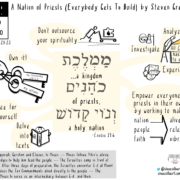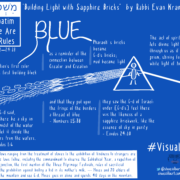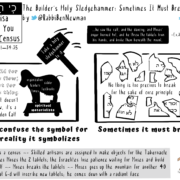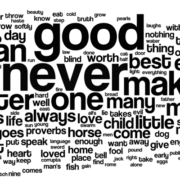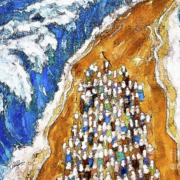How can we be more creative?
![]()
Part of an ongoing series that explores Torah through an ethic of social justice and building a world worthy of the Divine.
Don’t miss the related video teaching at the bottom of the post.
How can we be more creative? It’s a question that people have been asking for thousands of years. In our modern era, the question takes on greater urgency than ever given the challenges that we confront. The variety, scope, and quantity of issues requiring our attention have never been greater. The need to be creative, to transcend (seeming) limitations is absolutely critical. Fortunately we have access to lessons from both the natural and the divine world.
Birds have inspired artists for thousands of years. Perhaps it’s their color or shape or movement or song – or more likely a combination of all of the above. Taken together, there is something about the beauty of birds that is powerfully inspirational and encourages creativity. It is hardly surprising that in this context, “Free as a bird” has become emblematic of what it means to be creative.
We look at birds, and we see freedom. They move through the sky in ways that we often envy. At a surface level, all we see is their freedom. So perhaps it’s counterintuitive to reflect for a moment on how in actuality birds are utterly constrained by, albeit adapted to, physical laws. For example, look at the Harris’s Hawk accompanying this drash. Every single feather is interlaced to create sustained lift. His beak, his eye, the leading edge of his wings, all are ideally shaped for aerodynamic excellence, allowing him to move through the air with stunning agility and phenomenal grace. Even his feet are tucked up under his tail, enhancing not only his speed but also his maneuverability. All of these physical adaptations reflect how this bird is engineered to respond to the constraints of his world.
In the same way, people often look at artists and marvel at their “unfettered” creativity. But I dare say that the artists themselves are fully cognizant of the full range of constraints within which they operate. Painters certainly understand the different opportunities available with water colors versus oils. Writers know the differences between the limitations and the opportunities of the novel versus the short story. And certainly there are expressive capabilities inherent in stills photography that are very different than those available from video.
Each of these different media has different capabilities and different parameters. The exhibition of artistry is not about ignoring those. On the contrary, creative art is working within the confines of the discipline, exhibiting mastery, using those constraints as a jumping off point for expression and storytelling. In other words, the power of an artist is demonstrated not by ignoring the rules but rather working in such a way that she can accomplish her mission – precisely because of them.
Turn to Torah for a moment. This week’s Parsha, Terumah, is not the most dramatic, perhaps not the most inspirational of all the biblical lessons. However, when seen in the correct light, our perspective changes and becomes much richer. By way of background, Terumah is essentially a set of blueprints. The entire portion is a list of minute details for how the tabernacle is to be constructed. God spells out step-by-step, material by material – even color by color – how the craftsmen are to build God’s abode.
Let’s first ask a question, “Why does this portion provide such a level of detail for something that is going to be done only one time?” Contrast Terumah’s specificity with various other aspects of Jewish practice that are destined to be eternal covenants. Here in Terumah we have extensive guidance on how to build the tabernacle, but we have only general guidelines for the ritual of circumcision, how to keep kosher, and even the observances of various holidays and pilgrimages. Why is it that some observances are dealt with at a summary level when the tabernacle construction is defined with such granularity?
One possible answer is to teach us the relationship between confinement and creativity. It would be easy to look at Terumah and conclude that nearly anyone could follow this set of blueprints and assemble the pieces. God makes it “so easy” that it doesn’t require any special ability. But in fact, exactly the opposite is the case. Betzalel and his team of craftsmen are described as, וְכׇל־חֲכַם־לֵ֖ב, “all who have a wise heart.” Of course they’re given specifications, but it is their skill, the transcendent wisdom in their hearts, that allows them to excel in creativity and imbue the tabernacle with that unique sense of love required for this Divine home.
We today face many global challenges. Perhaps the only characteristic they share is the degree to which they seem daunting. Pick any current issue: from climate to education from class division to race. Often we don’t even begin to address these issues precisely because we feel that there are constraints, boundaries, and strictures that stop us in our tracks. These constraints intimidate us to the point that we sadly turn away. “It’s all just too big and complex,” we say.
What if instead we took precisely the opposite tack? What if we embraced all of the complexity, the restrictions, the rules and instead used them as a springboard for our creativity? What if we took these boundaries as inspiration rather than limitation? Blueprints guide wise-hearted craftsmen to apply their skills and talents on precisely the right task. Social challenges we face are often the result of social policies gone awry. Here too we are presented with the focal point where we should concentrate our skills and talents.
Tackling the seemingly intractable issues we face is hard. No question. But we are given instruction, from both birds in the natural world and Torah’s Divine word, as guidance. May we be blessed with the wise-heartedness to heed these lessons and work to build a better world, infused with love and craft. Be Grounded. Fly High.
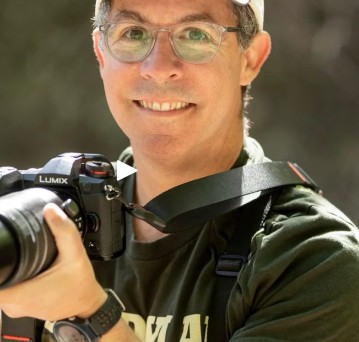
Aaric Eisenstein, “The Avian Rebbe,” teaches Jewish wisdom seen in the beauty of birds. This is his first post for Builders Blog.

